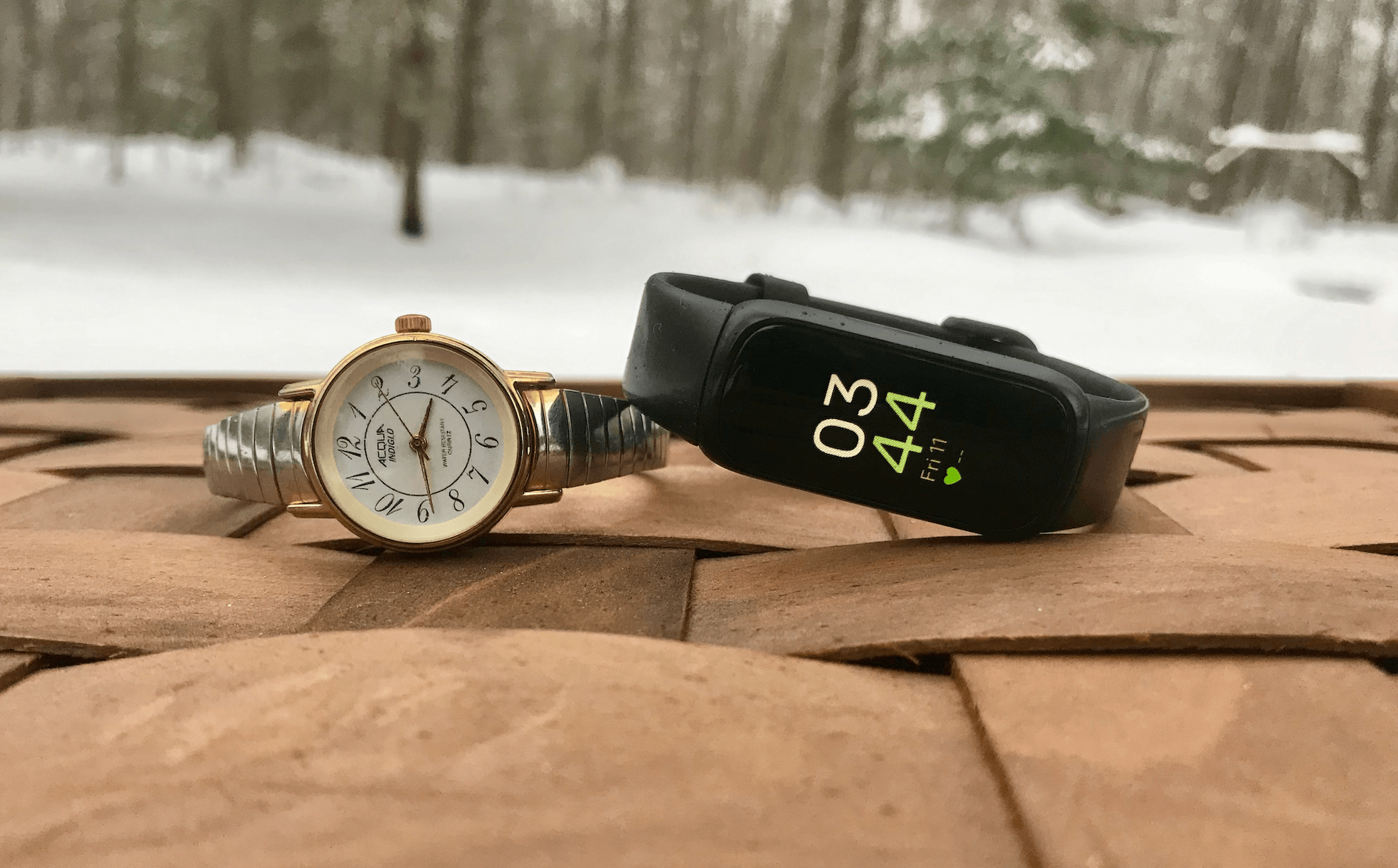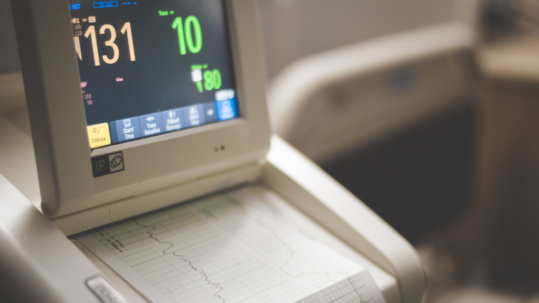
10 Jan Fitbit or Analog – Managing Heart Rate and Staying Grounded
Starting Out
In the early days of my POTS adventure, I was very intense about knowing my exact heart rate at any given moment. I bought the newest Fitbit with the most features, had a SPo2 monitor, and compared the two often. It was fascinating to watch the predictable rise and fall in heart rate, but simultaneously, it was concerning to see such fluctuations. I was not yet sure what to do when I saw my heart rate break the 140s or 150s while I was simply trying to take a quick shower or when I tanked and found myself in the 40s or 50s after a short nap. It felt like SOMETHING needed to be done. SOMEONE needed to know. And yes, initially it was helpful for my doctors to get a picture of the fluctuations, but in the months since getting diagnosed, my commitment to knowing my numbers has changed.
A Place For Tech
Certainly, there is a place for heart rate monitoring devices. If you have POTS, having a real-time heart rate monitor is critical. Sometimes flares can cause some wacky highs and lows. It is important to know when you are significantly outside of your normal range. For myself, I can expect to be around 130-140 after doing a flight of stairs, but when I suddenly jumped to a stubborn 170 one day, it was essential for me to have a reliable monitor so that I could know that it was coming down, and within what timeframe. Similarly, I can expect to be around 60-70 at rest. Pretty normal stuff. But when I suddenly got drowsy after a rough day, it was important for me to know that I had gotten as low as 45 so that I could let my mom know and she could keep an eye on me. Whether it’s high or low, when I feel particularly “off,” I value being able to know my exact numbers. The speed at which they shift gives me an idea of how unstable I am, and additionally, the way they remain high or low helps me decide when to seek medical attention.
But thankfully, living with POTS isn’t ALWAYS unpredictable. I am so grateful to have a growing measure of trust in my ability to interpret how I feel and what that means for immediate action. I am learning which symptoms can be safely ignored, and which ones can’t. I’m learning which symptoms and feelings are connected. I’m learning what my personal baselines feel like.
Going Analog
Even though the numbers can be scary and impressive, sometimes they just don’t matter. And while mildly stressful at first, I found that NOT having instant access to my numbers was helpful for my well-being and long-term success in managing my symptoms. The first few days after “going analog” I noticed that 1) I was very frustrated every time I looked at my watch and realized it couldn’t tell me my HR and 2) I had to pay more attention to how I was feeling and my symptoms to decide whether or not I needed help. It took the pressure off of the black-and-white data so that I could focus on working with my body to find my new limits.
If it were pain, I would be able to avoid activities that made my body hurt, thanks to the immediate feedback and striking adverse feeling. But instead, I’m juggling pulse and blood pressure, neither of which are obviously felt, but both of which must be relatively stable for a functional body. It has been quite the adventure – one made possible by paying attention to the nuances of drowsiness versus anxiety, heaviness versus clarity, seeing grey versus seeing stars, hearing thumping versus ringing, melting into the floor versus hopping up with ease, and so much more. I am increasingly able to distinguish the difference between true anxiety and the false anxiety that is actually just unchecked tachycardia. I am learning to distinguish the difference between being tired and falling blood pressure.
It’s such a nuanced game. For me, utilizing an analog watch has created the space for me to learn the difference between an unstable pulse of 105 that needs to be addressed and a stable 130 that is annoying but unconcerning. I no longer use numbers to tell me how I feel, and the resulting self-confidence has been a critical piece of my day-to-day success.
Surprise Feature
Oddly enough, there is another unexpected benefit to going analog–grounding. “Grounding” is a term used to refer to actions or exercises that help stabilize a person who is experiencing significant anxiety. It could be taking a moment to notice sounds/smells/textures, it could be counting a handful of coins, or it could be taking a few deep breaths. In my journey through POTS in tandem with mental health struggles, I found myself frequently overwhelmed. One sleepless night I tucked my hand under my head and noticed a ticking. It was delightful. I know not everyone has an appreciation for ticking, but I have found it comforting. It is a rhythm. A song. It is monotonous, it is welcoming, and it is stable. Since then, I have used ticking to my advantage and utilized it as a tool during escalating stress and panic attacks (Read more about managing panic attacks here). Three cheers for the under-the-radar greatness of analog.
Final Thoughts
Everyone manages their symptoms differently, and everyone has different needs. I have seen the benefits of having high tech, and I’ve also grown to love the old-school way of keeping time that still lets me calculate my heart rate in 15-second intervals when I need to. There are so many variables when it comes to POTS, and these are my current thoughts when it comes to telling time and tracking heart rate.
-
Making a Full Physical Recovery – A Day-by-Day Miracle
“You should exercise more.” A brutal statement. One I had tried to fulfill on my own, and time and time again, had failed. It was a frustrating piece of advice from my doctor, and felt so out of reach as I navigated my bouquet of chronic illnesses....
27 June, 2024 POTS No comment 0 Likes -
Awesome Recovery News!! And Why I No Longer Plan To Write About My Symptoms
I am so excited to report that after graduating from the 3-week Pain/Symptom Rehabilitation Center at Mayo Clinic in Rochester and continuing the program at home, I am nearly 100% recovered!...
05 March, 2024 POTS 3 Comments 2 Likes -
What is the Valsalva Maneuver like?
The Valsalva maneuver is EASILY the most fascinating thing I’ve gotten to do in this entire medical adventure. On the surface, it’s a fairly quick and easy part of autonomic testing, but underneath, it’s one of the coolest and most complicated mechanisms of the human body that I’ve encountered. ...
17 January, 2024 POTS 3 Comments 0 Likes






No Comments